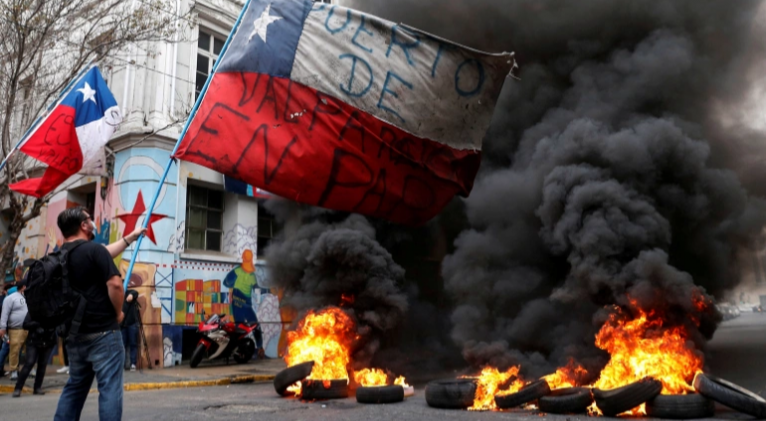IMF warns of growing poverty, unrest and geopolitical tensions
especiales

The global economic recovery continues, but with a widening gap between advanced economies and many emerging market and developing economies thanks to vaccine inequity and a lack of fiscal support, the International Monetary Fund (IMF) warned on Tuesday.
While the latest update to the IMF’s World Economic Outlook sees the global economy still growing 6 percent this year – unchanged from its April estimate – Chief Economist Gita Gopinath noted that the composition of the recovery continues to change.
“The recovery is not assured until the pandemic is beaten back globally,” Gopinath told reporters during a virtual press conference as she presented the latest outlook titled Fault Lines Widen in the Global Economy.
The IMF sees global growth decelerating to 4.9 percent next year. Advanced economies are expected to achieve 4.4 percent growth in 2022 – down from 5.6 percent in 2021 – while growth in emerging and developing economies is seen slowing to 5.2 percent in 2022 from an expected rebound 6.3 percent in 2021.
Rich, emerging and developing nations all took an economic beating last year when the coronavirus pandemic forced governments to close borders, shut businesses and idle manufacturing hubs worldwide.
As countries rolled back COVID restrictions this year, growth forecasts jumped as people emerged from lockdowns and unleashed pent-up demand for products and services. That demand surge though is expected to moderate next year.
Developed economies armed and shielded with a healthy supply of COVID-19 vaccines and fiscal firepower have managed to open up businesses and resume operations. But the emergence of new COVID variants and infection spikes laces uncertainty into the recovery path.
Growth in the U.S., the world’s largest economy, is seen slowing to 4.9 percent in 2022 after a bounce back of 7.0 percent expected this year. Europe is also expected to slow to 4.3 percent in 2022 from 4.6 in 2021.
Growth in the Middle East and Central Asia is expected to decelerate to 3.7 percent next year from 4.0 in 2021, while emerging and developing Asian economies are expected to dip more than a point from 7.5 in 2021 to 6.4 in 2022.
Latin America and the Caribbean are forecast to experience the sharpest fall from 5.8 percent in 2021 to 3.2 in 2022 after plummeting 7.0 in 2020.
Sub-Saharan Africa is the only region that is expected to see growth climb – from 3.4 in 2021 to 4.1 percent in 2022.
Vaccine inequality is seen as a chief driver of the widening gulf between recoveries in developed and less developed economies.
Close to 40 percent of people in advanced economies have been fully vaccinated compared with only 11 percent in emerging market economies and a tiny fraction in low-income developing countries.
Fresh waves of COVID-19 cases this year, notably in India are a major source of the deepening inequality between rich and poor nations. “The emergence of highly infectious virus variants could derail the recovery and wipe out four and a half trillion dollars cumulatively from global GDP by 2025,” Gopinath warned.
To make matters worse, poor countries and even emerging markets lack access to the funds necessary to jolt economies back to health. Advanced economies, on the other hand, passed $4.6 trillion in fiscal support for 2021 and beyond. In developing economies, most measures expired last year.
And some emerging markets like Brazil, Hungary, Mexico, Russia and Turkey have also started raising interest rates to contain soaring inflation triggered by supply chain bottlenecks as economies reopen. Higher interest rates cool economic growth.














Add new comment